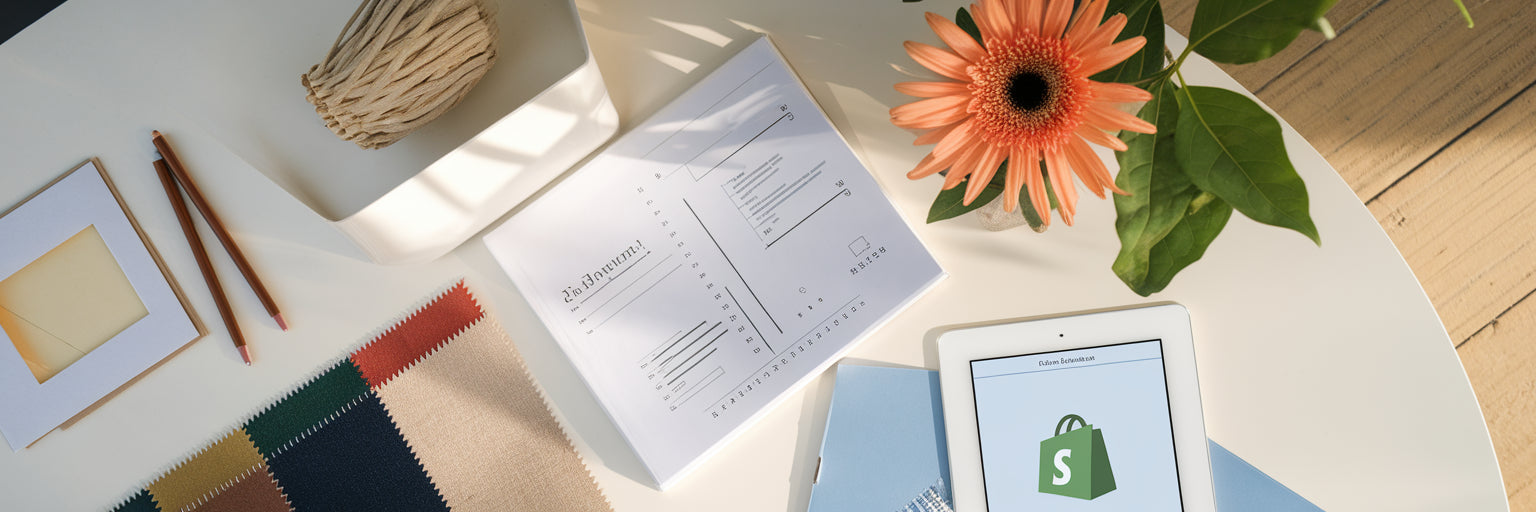
Essential Ecommerce Growth Strategies for Australian Brands in 2025
by
Setting the Scene for Growth in Australian Ecommerce
Australia's ecommerce market is projected to reach $50.2 billion by 2025, according to data from Anchanto. While this signals a massive opportunity, it also attracts intense competition. Global giants are pouring resources into the local market, a challenge highlighted by experts who warn that Australian brands are at risk of being overshadowed without innovative strategies. Generic playbooks that worked yesterday are no longer enough.
Sustainable growth now depends on a smarter approach. This means moving beyond basic marketing and focusing on technology-driven personalisation, genuine community building, and completely seamless customer journeys. The strategies that deliver real returns are those that blend brand storytelling with a sharp focus on performance.
TL;DR: Your 2025 Growth Checklist
- Leverage AI: Move beyond name merges to offer hyper-personalised product recommendations and support.
- Integrate Channels: Unify your online store, social media, and physical locations into one seamless customer experience.
- Build Real Loyalty: Design retention programs that create emotional connection, not just transactional rewards.
- Automate Smartly: Use technology to streamline operations and free up your team for high-impact work.
At The Hope Factory, we've seen firsthand that sustainable growth comes from a pragmatic, evidence-driven approach. It requires the right platform and the right expertise to execute effectively. This guide breaks down the key ecommerce growth strategies Australia we see working for brands on Shopify and Shopify Plus right now.
Leveraging AI for Hyper-Personalised Experiences

Beyond Basic Name Merges
Personalisation in 2025 is about creating a genuine one-to-one dialogue with your customers. Simply inserting a first name into an email subject line no longer cuts it. Modern AI tools allow you to act as a digital concierge, anticipating customer needs. Think of AI-driven styling quizzes that don't just suggest products but build an entire look, increasing average order value. Or dynamic product recommendations that change in real-time based on what a user is browsing, creating a discovery experience that feels curated just for them.
Practical AI Tools for Shopify Stores
For Shopify merchants, this technology is more accessible than ever. AI-powered search apps can interpret conversational queries, helping customers find exactly what they need, even if they don't know the precise product name. This is a direct way to increase ecommerce conversion rate. Similarly, 24/7 AI chatbots can handle complex support questions, freeing up your team to focus on sales and strategy. This shift is confirmed by industry analysis from Pattern, which notes that AI is moving from backend roles to customer-facing engagement tools.
Fuelling Personalisation with First-Party Data
A word of caution: AI is only as smart as the data you feed it. The effectiveness of these tools depends entirely on clean, well-structured first-party data. This includes purchase history, browsing behaviour, and information from customer accounts. By collecting and organising this data, you create a powerful feedback loop where every customer interaction makes the next one even more relevant. The result is not just a single sale, but a loyal relationship, which is how our work helped one client double their returning customer rate.
Integrating Social and Omnichannel Commerce
From Social Marketing to Social Selling
The line between content and commerce has blurred. Platforms like Instagram and TikTok are no longer just for brand awareness; they are powerful sales channels. The rise of social commerce Australia means customers can discover a product in their feed and purchase it without ever leaving the app. For brands targeting younger demographics, this frictionless path to purchase is not just a nice-to-have, it's an expectation. Integrating your Shopify catalogue with these platforms is a critical step to meeting customers where they are.
Creating a Truly Unified Customer Journey
True omnichannel retail Australia is about making every touchpoint feel like part of the same conversation. For a Shopify merchant, this means unifying systems so that a customer's experience is consistent whether they are on your website, in your store, or on social media. This requires a platform powerful enough to handle complex inventory and customer data. As the KPMG Australian Retail Outlook for 2025 notes, seamless omnichannel experiences are a key driver of customer retention. For growing brands, choosing a scalable platform like Shopify Plus can be the foundation for this unified approach.
Bridging the Online-Offline Divide
If you have a physical presence, connecting it to your digital store is essential. Simple tactics can make a huge difference. Use QR codes on in-store displays to link customers to detailed online product pages, reviews, and stock availability. Offer in-store returns for online orders to remove a major point of friction. Use customer location data to send targeted promotions for local events or store-specific sales. The goal is to make the channel irrelevant; the customer should only feel the consistency and convenience of your brand.
Building Lasting Loyalty and Retention

Beyond Transactional Points-for-Purchase
Traditional loyalty programs that offer simple points for purchases are losing their impact. Customers are inundated with these offers, and they often feel transactional rather than relational. To stand out, brands need to build a loyalty ecosystem that fosters a genuine emotional connection. This means rewarding customers for more than just spending money. Think exclusive access to new products, invitations to special events, or content that helps them get more value from their purchases. These are the cornerstones of effective customer loyalty programs Australia.
Designing a Data-Driven Loyalty Program
The most effective loyalty programs are built on customer data. By segmenting your audience based on purchase frequency, average order value, and product preferences, you can design more relevant and impactful rewards. A high-value, frequent shopper should receive different perks than a new customer. This data-driven approach ensures your loyalty budget is spent where it will have the greatest impact on retention. A well-executed program becomes an extension of your brand, as seen in the distinctive experiences of the brands in our portfolio.
| Loyalty Model | Best For | Pros & Cons |
|---|---|---|
| Points-Based | Encouraging repeat purchases | Simple to understand; can feel transactional. |
| Tiered Program | Fostering aspiration & high-value customers | Creates exclusivity & higher engagement; requires more management. |
| Value-Based | Aligning with brand mission (e.g., charity donations) | Builds strong emotional connection; may not appeal to all customers. |
Note: This table outlines the primary use cases and trade-offs for common loyalty program structures. The best choice depends on your brand's specific goals and customer base.
The Ultimate Loyalty: Memberships and Subscriptions
For the right business model, subscriptions and paid memberships represent the pinnacle of customer loyalty. They create predictable, recurring revenue while offering customers superior value and convenience. Whether it's a monthly replenishment of essential goods or a membership that unlocks exclusive content and services, this model transforms customers into long-term partners. Shopify apps like Recharge make implementing and managing subscription programs straightforward, allowing you to build a reliable revenue stream.
Frequently Asked Questions (FAQs)
How much should I budget for these growth strategies?
Start small and scale. Instead of trying to do everything at once, pick one tactic that addresses your biggest pain point. For example, if your support team is overwhelmed, invest in an AI chatbot. If your AOV is low, test a product recommendation app. Measure the return on investment (ROI) and reinvest what works. Automation tools often have a higher upfront cost but can significantly reduce operational expenses over time.
Can my small Australian brand really compete with global giants?
Absolutely. Your advantage is your agility and local identity. Global companies struggle to replicate the authentic connection you can build with your community. Focus on personalised service, unique brand storytelling, and a deep understanding of the local market. Use your size as a strength to offer a level of care and customisation that larger competitors cannot match.
Which AI tool should I start with?
Begin by identifying your most pressing business problem. Is it a low conversion rate? An AI-powered search or recommendation app could help. Are you losing sales after hours? A 24/7 chatbot might be the answer. The Shopify App Store is an excellent place to explore options. Start with a tool that offers a clear solution to a specific challenge rather than adopting AI for its own sake.
How do I ensure my omnichannel strategy is seamless?
The key is a single source of truth for your data. Your inventory, customer information, and order history must be centralised. This is where a unified platform is non-negotiable. Using Shopify for your online store and Shopify POS for your physical locations creates a native integration that keeps all your data in one place. This is one of the most effective Shopify Plus growth tactics for scaling brands, as it prevents data silos and ensures a smooth customer experience across all channels.
Your Next Steps for Sustainable Growth
Sustainable growth in 2025 is not about finding a single magic bullet. It demands a strategic, customer-centric approach that blends smart technology with authentic brand building. By focusing on personalisation, creating a unified omnichannel experience, and building genuine loyalty, Australian brands can not only compete but thrive. Your local identity and ability to connect with customers on a deeper level remain your greatest assets.
Implementation Checklist:
- Audit Your Data: Review the quality and accessibility of your first-party customer data. Is it clean and ready for personalisation?
- Pick One Personalisation Tactic: Choose one AI-powered tool that solves a clear problem and measure its impact.
- Map Your Customer Journey: Identify and fix points of friction between your online and offline channels.
- Review Your Loyalty Offering: Does your program build an emotional connection, or is it purely transactional?
If you're ready to move from planning to implementation, our team can help you build a high-converting Shopify Plus store that puts these strategies into action. Book a no-obligation chat with us today to discuss your growth roadmap.
Sources
- Anchanto: Australia's Ecommerce Industry: Everything You Need to Know
- Ecommerce News: Australian brands at serious risk of being crushed by global ecommerce giants, expert warns
- Pattern: The future of ecommerce in Australia: Key trends to watch in 2025
- KPMG: Australian Retail Outlook 2025